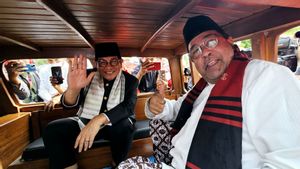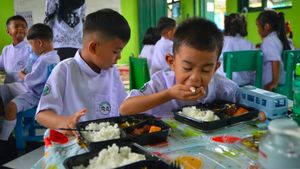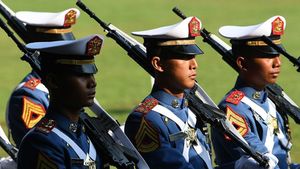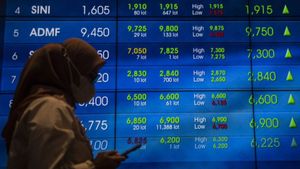JAKARTA - The Dutch colonization brought many harm to the natives. He took the wealth of the archipelago. While the Bumiputra are being squeezed like a milk cow. This condition was exacerbated by the Dutch categorizing the natives as third-class people in the Dutch East Indies. Alias status is like a pet. The injustice of the Dutch made the natives inflame many rebellions. Not with a gun. The Bumiputras chose a machete as a symbol of resistance.
The only thing the Dutch colonialists thought about the archipelago was profit. The fate of the Bumiputra itself is considered the umpteenth number. It didn't really matter to them. After all, they consider giving a portion of the profits to officials from the Bumiputra circles is more than enough. Those who received the profits from colonialism included regents, demangs, village heads, and so on.
They were commissioned by the Dutch to collect taxes or tribute. In other words, they participate in oppressing their own nation. They live extravagantly. While the people are forced to be in the pit of sorrow from oppression. Many of the harvests of the bumiputras were taken by him. On the other hand, taxes are getting higher.

This arbitrary treatment often makes the natives hurt. Especially the scholars who had studied in Mecca. The provision of an understanding of pan-Islamism which is anti-imperialism and colonialism is used as a lesson to fight.
They immediately gathered commoners who were affected by Dutch policies. Resistance to the Netherlands is considered a fixed price. Although in terms of weapons less superior. They choose to keep fighting even if they lose. The narrative of defeat is more honorable than having to submit to the Dutch.
“In all cases, the leaders and instigators are the hajjis. The rebellion was inspired by Islam and led by Islam. Teams of 40 people each were selected. Oaths were demanded and carried out, with all participants solemnly agreeing, in writing, to commit murder. The fighters were selected, who were experts in Dutch East Indies martial arts techniques.”
“And armed with swords and spears and horribly sharp crooked knives called machetes, all new and made by sympathetic metalworkers in Batavia. White robes and white turbans were made and collected for the warriors. The lists of targets were selected – all Europeans, all infidels,” said Simon Winchester in the book Krakatoa: When the World Exploded August 27, 1883 (2006).
Machete Tool FightThe case of arbitrary tax collections gave rise to a lot of resistance and rebellion against the Dutch. Rebellions are often inflamed by Islamic religious leaders. There is also a uniqueness in each rebellion. Those who resist do not use firearms as their main weapon. Instead, they chose a machete to fight. Therefore, the machete became a symbol of the resistance of the small people against the invaders.
In the rebellions in Tambun (1869) and Ciomas (1888), for example. The machete became the main weapon against the Dutch. Even considered sacred. The existence of a machete makes the courage of the natives who fight become high. Even if the resistance can be suppressed in the end.
“In the Tambun rebellion in 1869 it was stated clearly that the rebels only had machetes, no firearms. In the most talked about uprising in the land of Ciomas in 1888 too.”
“The power gap between the rebels and the bearers of colonial power is still more poignant. At that time 75 defenseless men were shot from the top of a ravine. In such uprisings, there is no visible presence of firearms among the population," said Margreet Van Till in the book Batavia Kala Malam: Police, Bandits, and Firearms (2018).

The greed of the Dutch East Indies colonial government was also felt by the Betawi champion, Entong Gendut. He witnessed for himself how the Dutch made arbitrary regulations against the peasants in his village, Condet. The tax regulation was issued in 1912. It stated that the Netherlands gave as much space as possible to landlords to take action against farmers who failed to pay taxes through the courts.
The regulation has in fact been transformed as a means of impoverishing farmers. No farmer was able to escape court punishment. They were made bankrupt. Because many of his assets were confiscated or sold by the court. The landlord's reaction was actually happy with the policies of the colonial government. Their profits are maintained. This is also a space for landlords to raise taxes.
The news made Entong Fat angry. He invited other farmers to fight. Machetes are the majority of the weapons used by Entong Fat and his followers. The practice of resistance had made the Netherlands distraught. He was able to win the fight. In the end, Entong Fat was shot dead in 1916.
"After praying Entong Fat came out. In his hand he held a spear covered in white cloth, his loyal cleaver tucked in his waist. In the other hand is a red flag with a white crescent. The look in his eyes was so bold, staring intently at the wedana and marsose who were starting to be filled with fear."
“He replied to the wedana's shouts by saying that he would not submit to anyone including the Dutch. 'Sabilullah... Sabilullah...!' his troops agreed. Battle is unavoidable. But the victory was on Entong Fat's side. Many marsose-marsose died, wedana became captives," concluded Ibn Umar Junior in the book Entong Fat, Djati, Kumpeni (2007).
The English, Chinese, Japanese, Arabic, and French versions are automatically generated by the AI. So there may still be inaccuracies in translating, please always see Indonesian as our main language. (system supported by DigitalSiber.id)








